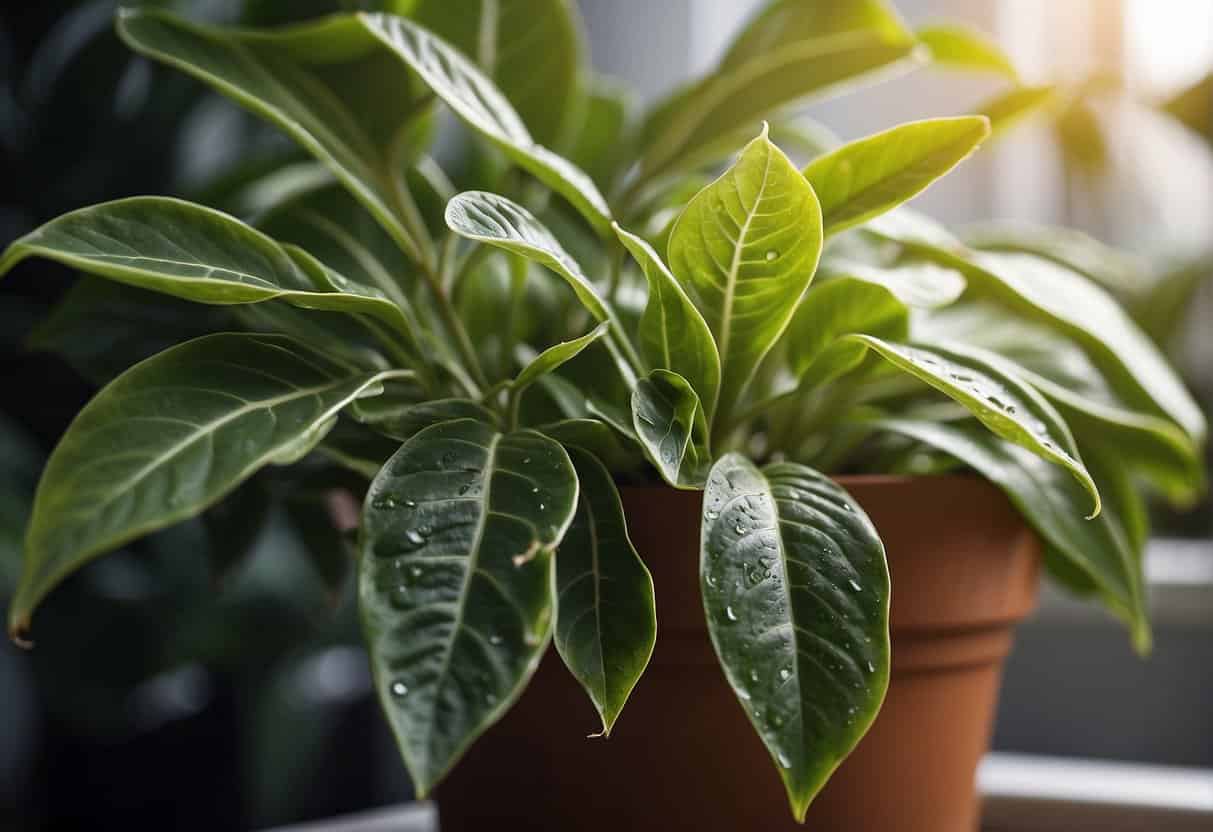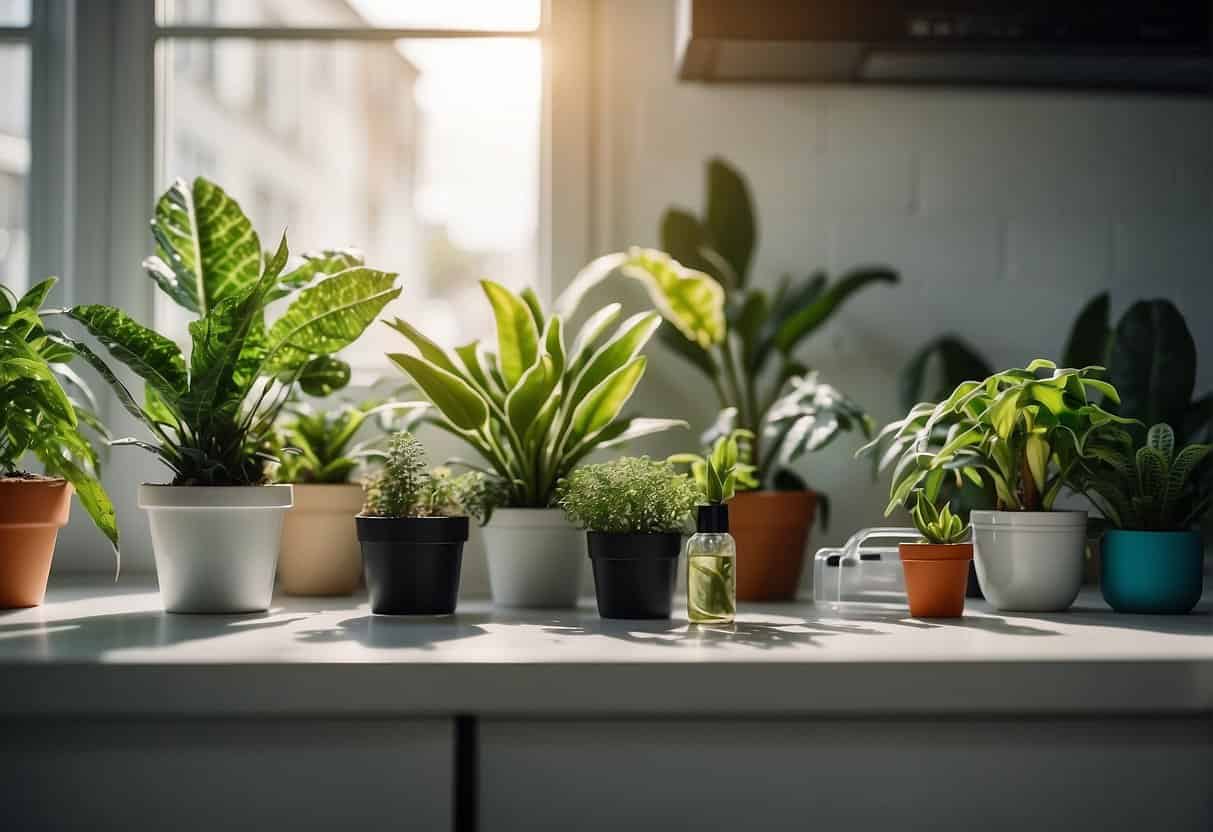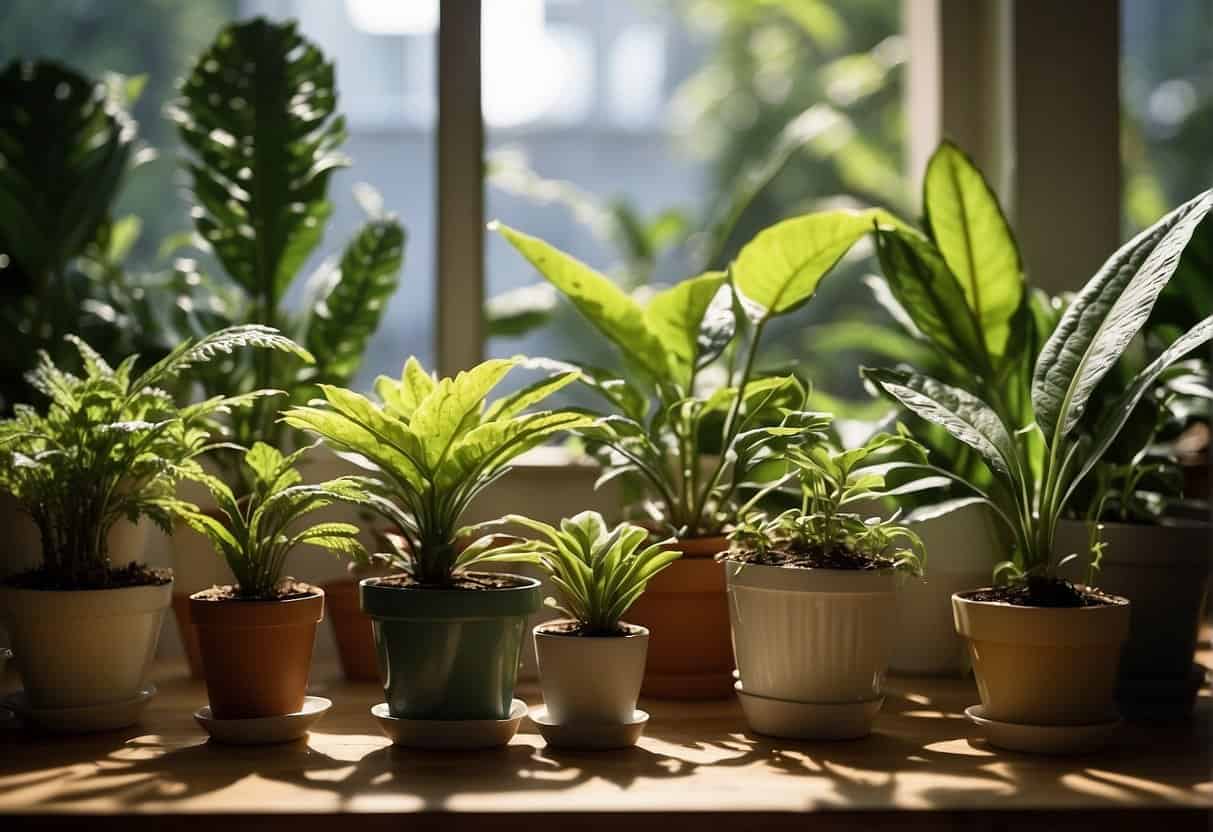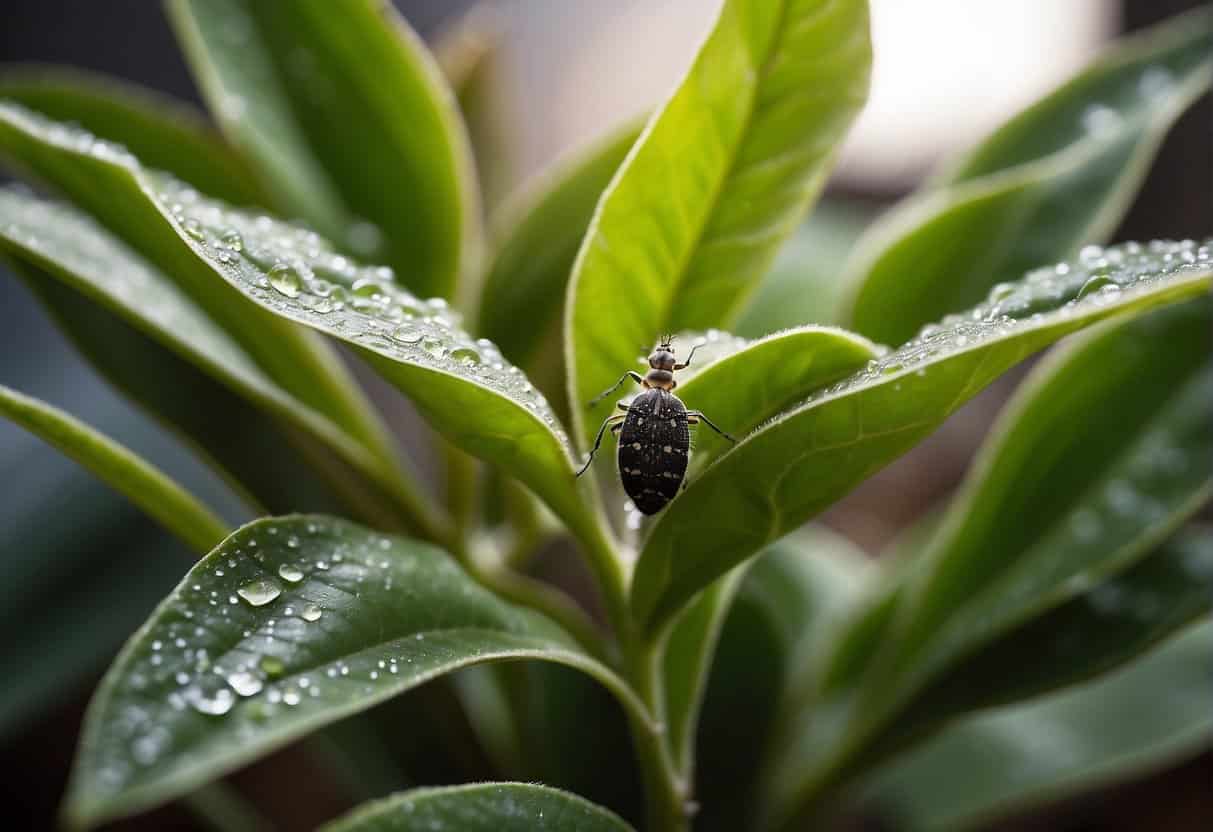Houseplants are a great way to bring a touch of nature indoors, but they can also be vulnerable to a variety of pests and diseases. Troubleshooting houseplant pest and disease problems can be a challenging task, but with the right knowledge and tools, it is possible to keep your plants healthy and thriving.

One of the most common houseplant problems is pests. These can include spider mites, mealybugs, scale insects, and aphids, among others. Pests can cause damage to the leaves and stems of your plants, and in severe cases, they can even kill the plant. It’s important to identify the type of pest you’re dealing with so that you can choose the appropriate treatment.
Another common houseplant problem is disease. Fungal and bacterial diseases can cause wilting, yellowing, and other symptoms in your plants. Overwatering, poor drainage, and high humidity can all contribute to the development of disease. Identifying the type of disease is crucial to effective treatment, as different diseases require different treatments. With proper care and attention, it is possible to prevent and manage houseplant problems, keeping your plants healthy and beautiful for years to come.
Understanding Plant Health
Houseplants are a great way to bring natural beauty into your home. However, just like outdoor plants, they can suffer from various diseases, pests, and environmental factors that can cause them to wither and die. Understanding plant health is crucial to keeping your houseplants healthy and thriving.
Identifying Common Houseplant Diseases
When it comes to our leafy friends, they can catch a few bugs themselves – not the crawling kind, but plant diseases like powdery mildew, regular mildew, and root rot. Picture powdery mildew as this white, powdery stuff making itself at home on your plant’s leaves and stems – a bit like nature’s dandruff. Mildew, on the other hand, shows up as a gray or white coating, almost like your plants are sporting a fuzzy sweater. Now, root rot is a bit sneakier – it’s a bacterial disease causing the roots to go mushy and rotten, leading your once-perky plant to wilt and, sadly, meet its end. So, keeping an eye out for these troublemakers and giving your plants some extra TLC can help them stay healthy and happy.
Recognizing Pest Infestations
Bugs in the plant world – yeah, they’re a thing. Meet the troublemakers: mites, aphids, spider mites, mealybugs, scale, thrips, fungus gnats, and whiteflies. These little critters are the pests that love to mess with your houseplants. They’re not just annoying; they can wreck havoc on your plant’s leaves and stems, and to top it off, they’re like tiny carriers of plant diseases. So, it’s like a double whammy – not only are they causing visible damage, but they’re also spreading plant illnesses. Keeping an eye out for these sneaky intruders and dealing with them pronto can help your leafy pals stay bug-free and healthy.
Environmental Factors Affecting Plant Health
Environmental conditions such as light, humidity, temperature, and air circulation can also affect plant health. Low light and low humidity can cause stress to plants, while heat stress can cause wilting and other problems. Lack of air circulation can also lead to the growth of mold and other fungal diseases.
To keep your houseplants healthy, it is important to provide them with the right environmental conditions and to monitor them for signs of disease and pest infestations. Regular care and maintenance, including proper watering, fertilization, and pruning, can also help keep your plants healthy and thriving.
Preventative Measures and Cultural Practices

Houseplants are susceptible to pest and disease problems, but there are various preventative measures and cultural practices that can help minimize the risk of infestation. Here are some fundamental practices that can help keep houseplants healthy:
Optimal Watering Techniques
Watering is one of the most critical aspects of houseplant care. Overwatering can lead to root rot, while underwatering can cause the plant to wilt and die. To ensure optimal watering, use a moisture meter to check the soil’s moisture level before watering. Water only when the top inch of soil is dry to the touch. Avoid inconsistent watering, which can cause stress to the plant.
Proper Lighting and Placement
Light is essential for photosynthesis, which is vital for plant growth. Ensure that the plant is placed in a location that receives adequate light. However, too much direct sunlight can cause sunburn or leaf scorch, while too little light can lead to stunted growth. Consider the plant’s light requirements and place it in a window that provides the optimal amount of light.
Maintaining Ideal Humidity and Temperature
Most houseplants thrive in a humid environment, and maintaining ideal humidity can help prevent pest and disease problems. Use a humidifier or place a tray of water near the plant to increase humidity levels. Temperature is also essential, and most houseplants prefer temperatures between 60-75°F. Avoid exposing the plant to extreme temperature changes, which can cause environmental problems.
Soil and Repotting Fundamentals
The soil is the foundation of plant growth, and using the right potting mix is crucial. Ensure that the potting mix has adequate drainage to prevent waterlogging and root rot. Repotting is also essential to ensure that the plant has enough space to grow. Repot the plant when it outgrows its current container, and use a pot that is slightly larger than the previous one.
Fertilization and Nutrient Management
Fertilization is essential for plant growth and health, but overfertilization can lead to salt buildup and nutrient toxicity. Use a balanced fertilizer and follow the manufacturer’s instructions for application. Avoid using saucers to collect excess water, which can lead to salt buildup. Consider using a leaching solution to remove excess salts from the soil.
Diagnosis and Treatment

Diagnosing Houseplant Problems
Alright, let’s talk about the dramas our houseplants might face – it’s not just us humans dealing with issues! Your leafy companions might show signs like yellowing leaves, brown tips, spots, dropping leaves, weak growth, stretching, spindly stems, curling leaves, black spots, and wilting. Sounds like a laundry list, right? But here’s the deal – the first step to fixing these dramas is figuring out what’s causing them.
Diseases are one culprit, and they’re like the troublemakers of the plant world. Fungal foes like powdery mildew, regular mildew, root rot, and gray mold can mess with your green buddies. Ever heard of phytophthora, pythium, Rhizoctonia, or anthracnose? Yeah, those are common houseplant diseases you might encounter. But wait, bacterial diseases can join the party too.
Now, pests – the insect invaders. Mites, aphids, spider mites, mealybugs, and scales – these tiny troublemakers can wreak havoc on your plants. And here’s a sneaky clue – if you spot honeydew, a sticky substance the pests leave behind, you’ve got a bug issue. Oh, and to top it off, there’s sooty mold, a black fungus that can crash the party after a pest invasion. So, keeping an eye out for these signs and getting to the root of the problem will help you play superhero to your plant pals in distress.
Treating Diseases and Fungal Infections
Fungal diseases can be treated with fungicides, which are available at most garden centers. Powdery mildew and mildew can also be treated with a solution of baking soda and water. Root rot can be prevented by ensuring that the soil is well-draining and not overwatering the plant. Gray mold can be prevented by increasing air circulation around the plant.
Managing Pest Issues
Alright, let’s talk about kicking those pesky pests out of your plant haven. When it comes to insect invaders, you’ve got some superhero tools in your arsenal. Insecticidal soap and neem oil are like plant-friendly pest fighters – they’ll show those bugs who’s boss. For mealybugs, a quick wipe-down with rubbing alcohol can send them packing. Flying insects? Well, set up yellow sticky traps, and they’ll be stuck in no time. Scales are a bit stubborn, but a good scrape with your trusty fingernail or a toothbrush can help you show them the door. And that sticky honeydew left behind by pests? A solution of water and dish soap is like a superhero cleanup crew – it’ll eliminate that sticky mess.
But here’s the real trick – prevention is the name of the game. Regularly check your plants for any signs of trouble, keep them spick and span, and make sure they’re in tip-top health. It’s like giving your plants a superhero shield against pests. And if, despite all your efforts, an infestation sneaks in, don’t procrastinate! Act fast to stop it from spreading and causing chaos in your plant paradise. Stay vigilant, be the plant superhero, and keep those pests at bay!
Recovery and Ongoing Care

After treating houseplant pest and disease problems, it is important to take proper care of the plant to ensure its full recovery. This section will cover post-treatment plant care, monitoring and adjusting environmental conditions, and prevention strategies.
Post-Treatment Plant Care
Once the plant has been treated for pests or diseases, following up with proper care is important to ensure its full recovery. This includes:
- Watering: Water the plant as needed, but avoid overwatering as it can lead to root rot.
- Fertilizer: Avoid fertilizing the plant for at least a month after treatment to avoid stressing the plant.
- Light: Ensure the plant gets enough light, but avoid direct sunlight as it can damage the plant.
- Humidity: Maintain the appropriate humidity level for the plant species.
- Temperature: Keep the plant in a stable range suitable for its species.
- Air circulation: Ensure proper air circulation around the plant to prevent fungal growth.
Monitoring and Adjusting Environmental Conditions
It is important to monitor the plant’s environmental conditions regularly to ensure it is healthy and prevent future pest and disease problems. This includes:
- Water: Monitor the plant’s soil moisture level regularly and adjust watering.
- Light: Monitor the plant’s light exposure and adjust its position accordingly.
- Humidity: Monitor the plant’s humidity level and adjust it if necessary.
- Temperature: Monitor the plant’s temperature and adjust it if necessary.
- Air circulation: Ensure proper air circulation around the plant.
Prevention Strategies
Preventing pest and disease problems is the best way to ensure the health of houseplants. Some prevention strategies include:
- Regularly inspecting plants for signs of pests or diseases.
- Quarantining new plants before introducing them into the home.
- Maintaining a clean and tidy environment around the plants.
- Using organic pest control methods when possible.
- Avoid overwatering and over-fertilizing plants.
By following these post-treatment plant care, monitoring and adjusting environmental conditions, and prevention strategies, houseplants can thrive and avoid future pest and disease problems.
Additional Tips and Resources

Here are some additional tips and resources to help you troubleshoot houseplant pest and disease problems:
- Identify the problem: Before taking any action, it’s important to identify the problem. Observe the plant carefully and note any changes in its appearance or behavior. Use online resources or consult a local nursery to identify the problem accurately.
- Prevention is key: Prevention is always better than cure. Ensure that the indoor plants are healthy and well-cared for. Keep them away from direct sunlight and drafts. Water them regularly and avoid overwatering. Use organic fertilizers and pest control methods.
- Natural remedies: There are several natural remedies that can help control pests and diseases. For example, spraying a solution of neem oil and water can help control spider mites and other pests. Placing yellow sticky traps can help control fungus gnats. Using a solution of baking soda and water can help control powdery mildew.
- Species-specific care: Different indoor plants have different requirements and are prone to different pests and diseases. It’s important to research the specific care requirements of each species and provide them with the necessary care. For example, ivy plants require moderate watering and indirect sunlight.
By following these tips and utilizing the available resources, troubleshooting houseplant pest and disease problems can become much easier. Remember to always observe the plant carefully, identify the problem accurately, and take appropriate action.
Frequently Asked Questions

How can you identify and treat common pests on indoor plants?
Common pests on indoor plants include spider mites, mealybugs, scale insects, and whiteflies. Signs of infestation include webbing, sticky residue, yellowing leaves, and distorted growth.
Treatment options include using insecticidal soap, neem oil, or horticultural oil. It is important to thoroughly cover all plant surfaces and repeat treatments as needed to fully eliminate the pests.
What are the typical signs of disease in houseplants, and how can you address them?
Disease in houseplants can present as wilting, yellowing leaves, black spots, or stunted growth. Fungal and bacterial infections are common culprits.
To address these issues, it is important to remove and dispose of any infected plant material. Adjusting watering habits and improving air circulation can also help prevent the spread of disease. Fungicides and bactericides may be necessary in severe cases.
Which indoor plant pest is considered the most difficult to eliminate, and what methods are effective against it?
Spider mites are often considered the most difficult indoor plant pest to eliminate. They are small and reproduce quickly, making them difficult to spot and control.
Effective methods for eliminating spider mites include using insecticidal soap or neem oil, as well as regularly washing plant leaves with a strong stream of water. It may also be necessary to isolate infested plants to prevent further spread.
What steps should be taken to diagnose and remedy problems with houseplant leaves?
When diagnosing problems with houseplant leaves, it is important to consider factors such as watering habits, lighting, and temperature.
Remedies may include adjusting watering schedules, moving plants to areas with more or less light, or adjusting indoor temperature. In some cases, pruning affected leaves or repotting the plant may also be necessary.
How can you use pictures to accurately diagnose issues with indoor plants?
Pictures can be a helpful tool in diagnosing issues with indoor plants. It is important to take clear, well-lit photos of the entire plant, as well as any affected leaves or stems.
Comparing photos to online resources or consulting with a knowledgeable plant expert can help accurately identify and address issues.
What are the best practices for preventing pest and disease problems in houseplants?
Best practices for preventing pest and disease problems in houseplants include regularly inspecting plants for signs of infestation or disease, maintaining proper watering and lighting conditions, and avoiding overcrowding.
Additionally, quarantining new plants before introducing them to existing indoor plants can help prevent the spread of pests or disease.

